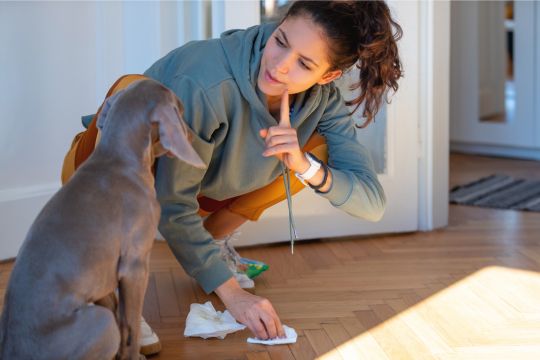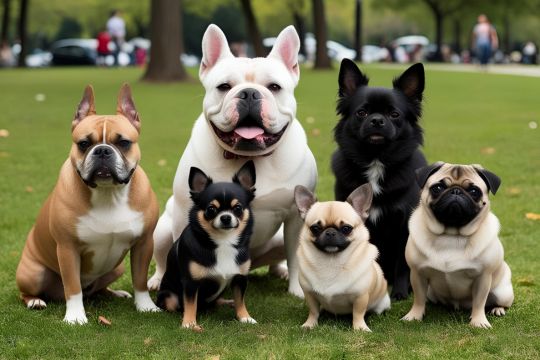Whether you’re a first-time dog owner or just need a refresher, understanding the basics of potty training is key to a happy home.
Bringing a new dog or puppy home is an exciting time! But let’s be honest, the excitement can quickly turn into frustration when you find an “accident” on your brand-new rug. Potty training is one of the most fundamental and important parts of dog ownership.
Whether you’re a first-time dog owner or just need a refresher, understanding the basics of potty training is key to a happy home.
Bringing a new dog or puppy home is an exciting time! But let’s be honest, the excitement can quickly turn into frustration when you find an “accident” on your brand-new rug. Potty training is one of the most fundamental and important parts of dog ownership.
At first, it may seem daunting — but with the right approach, patience, and consistency, you can teach your furry friend to do their business in the right place.
To help you get there with confidence, this guide will walk you through the essential steps and tips for successful potty training, helping you and your dog build a stronger bond in the process.
The Foundation of Potty Training: Management and Routine
Before you even begin training, you need a solid strategy. This is all about management and routine.
1. Establish a Consistent Schedule
Dogs thrive on routine. A predictable schedule helps them understand when and where they should go to the bathroom. Here’s a sample routine you can adapt:
Wake Up: Take your dog out immediately. Don’t even wait to put the coffee on.
After Meals: Within 15-20 minutes of eating or drinking, dogs often need to go.
Before Bed: A final trip outside right before you turn in for the night is crucial.
After Naps and Play: A dog’s bladder and bowels are stimulated after they wake up or get excited during play.
Frequent Trips: For young puppies, take them out every 1-2 hours. As they get older and can hold it longer, you can extend these intervals.
2. Create a Designated “Potty Spot”
Choose a specific area in your yard or a nearby park for your dog to do their business. Take them to this same spot every time. The familiar smells will encourage them to go, and they’ll start to associate that spot with going to the bathroom.
The Training Process: Positive Reinforcement is Key
Training is about teaching your dog what you want them to do, not just punishing them for what you don’t. Positive reinforcement is the most effective method.
3. Reward Success
Every single time your dog goes to the bathroom in the right spot, give them a high-value reward immediately. This can be a small, tasty treat, enthusiastic praise, or a quick game with their favorite toy. The reward needs to be given within a few seconds of them finishing so they connect the action (pottying outside) with the reward.
4. Use a Command Word
Pair the action with a specific command word like “go potty,” “do your business,” or “hurry up.” Say the command as they’re squatting or lifting their leg. Over time, this word will serve as a cue, helping them understand what you want them to do when you’re outside.
Handling Accidents: What to Do and What to Avoid
Accidents will happen, especially in the beginning. How you react is critical.
Catching them in the act? If you see your dog starting to go inside, make a sharp, startling noise (like a clap) to interrupt them. Immediately pick them up and take them outside to their designated potty spot. If they finish going outside, reward them enthusiastically.
Finding a mess later? Do not scold your dog. They won’t understand why they’re being punished after the fact. Simply clean up the mess with an enzymatic cleaner to remove the odor. Dogs are attracted to the smell of their own waste, so a thorough cleanup is essential to prevent future accidents in the same spot.
Never physically punish your dog or rub their nose in the mess. This only teaches them to fear you and to hide when they need to go, making training much harder.
The Power of Crate Training
A crate can be one of your most valuable potty training tools. Dogs instinctively don’t want to soil their sleeping area.
Use the crate as a safe den, not as a punishment.
Start with short periods and gradually increase the time your dog spends in the crate.
Never leave a puppy in a crate for longer than they can reasonably hold their bladder. The rule of thumb for a puppy’s bladder control is roughly their age in months plus one hour (e.g., a 3-month-old puppy can hold it for about 4 hours).
Take your dog out immediately when you let them out of their crate.
Potty training requires patience, consistency, and a positive attitude. Celebrate the small victories, stay consistent with your routine, and remember that every dog learns at their own pace. Soon enough, those frustrating accidents will be a thing of the past, and you’ll have a fully potty-trained, happy companion.
What part of the potty training process do you find most challenging?






